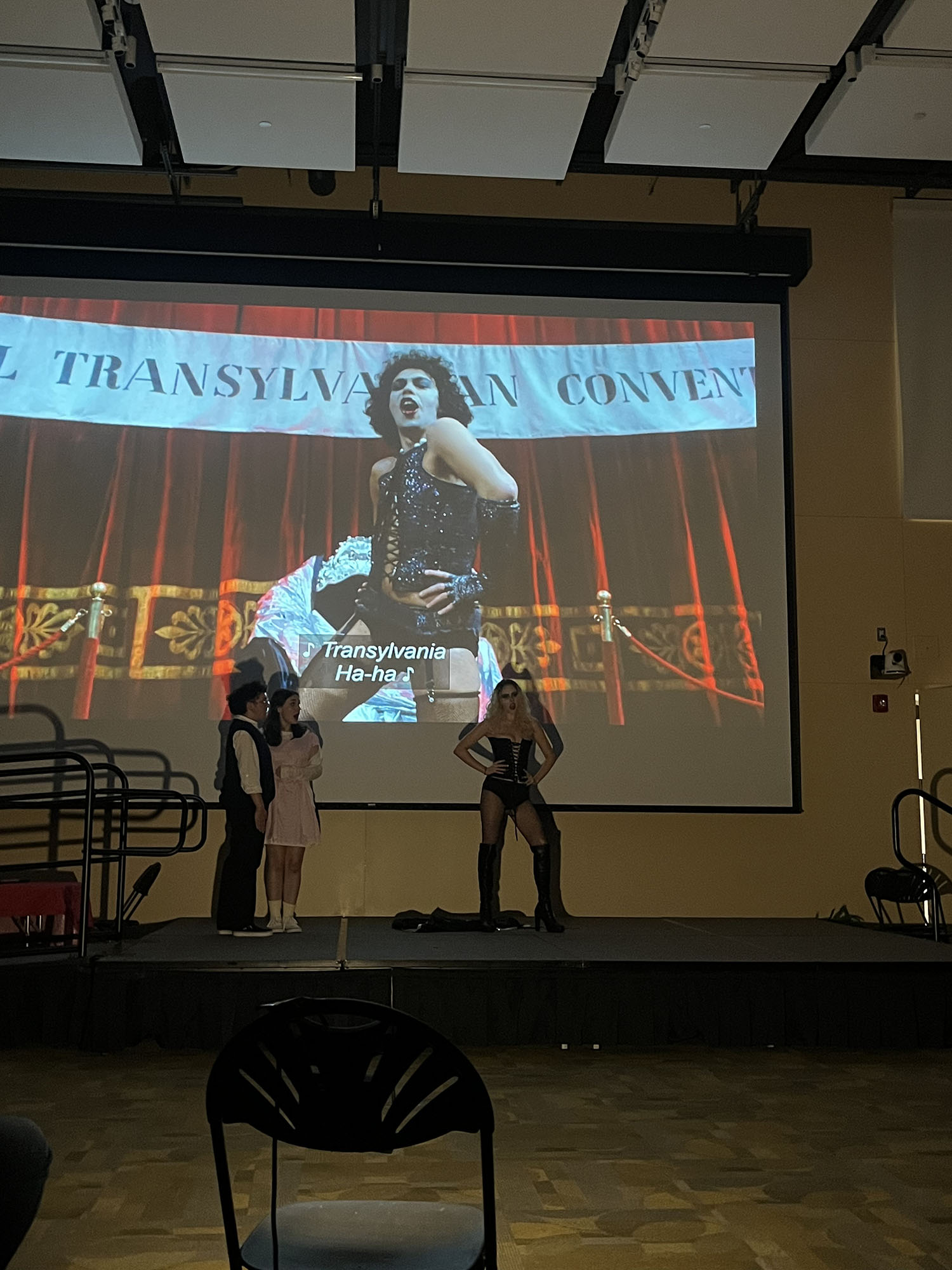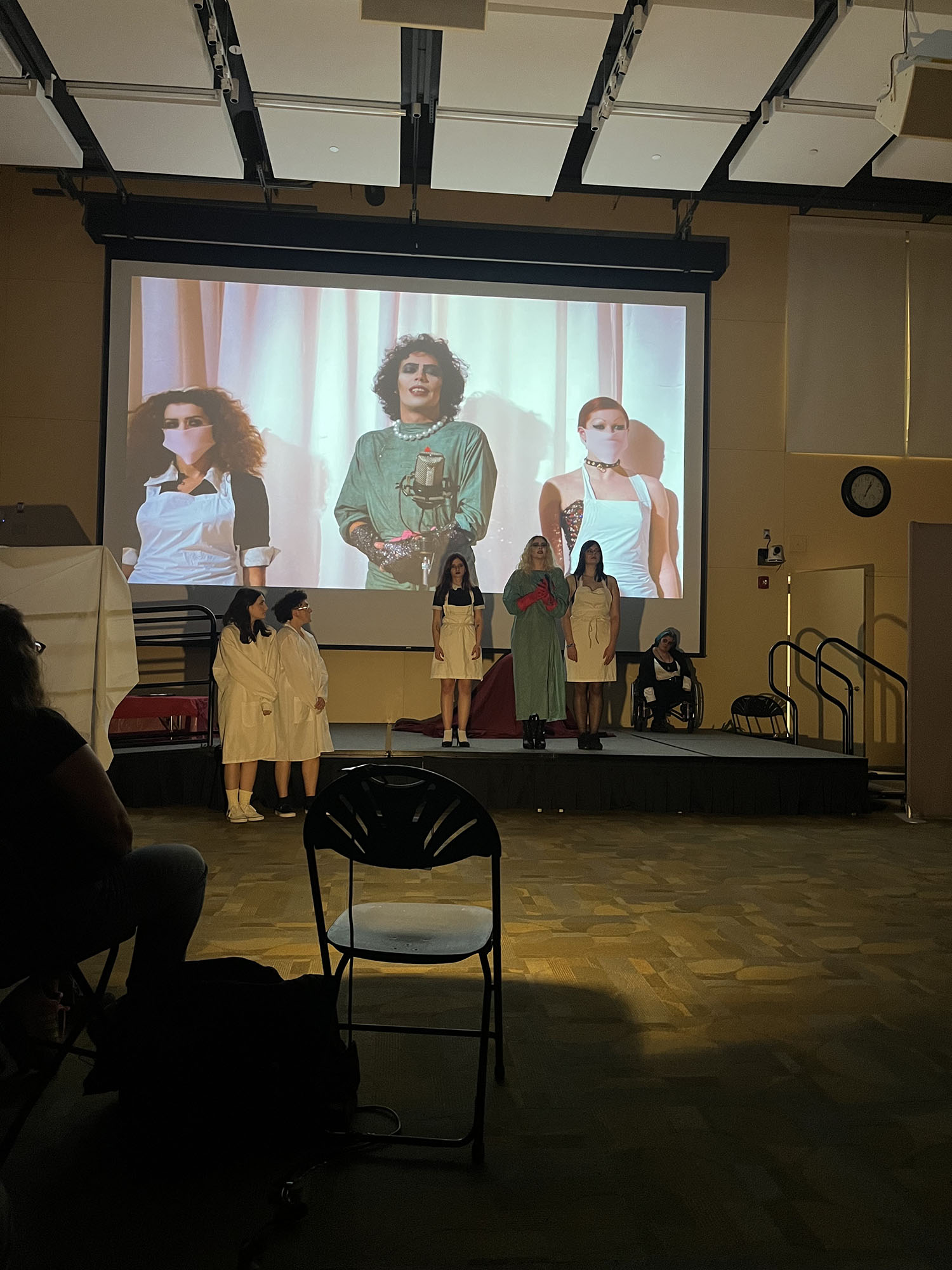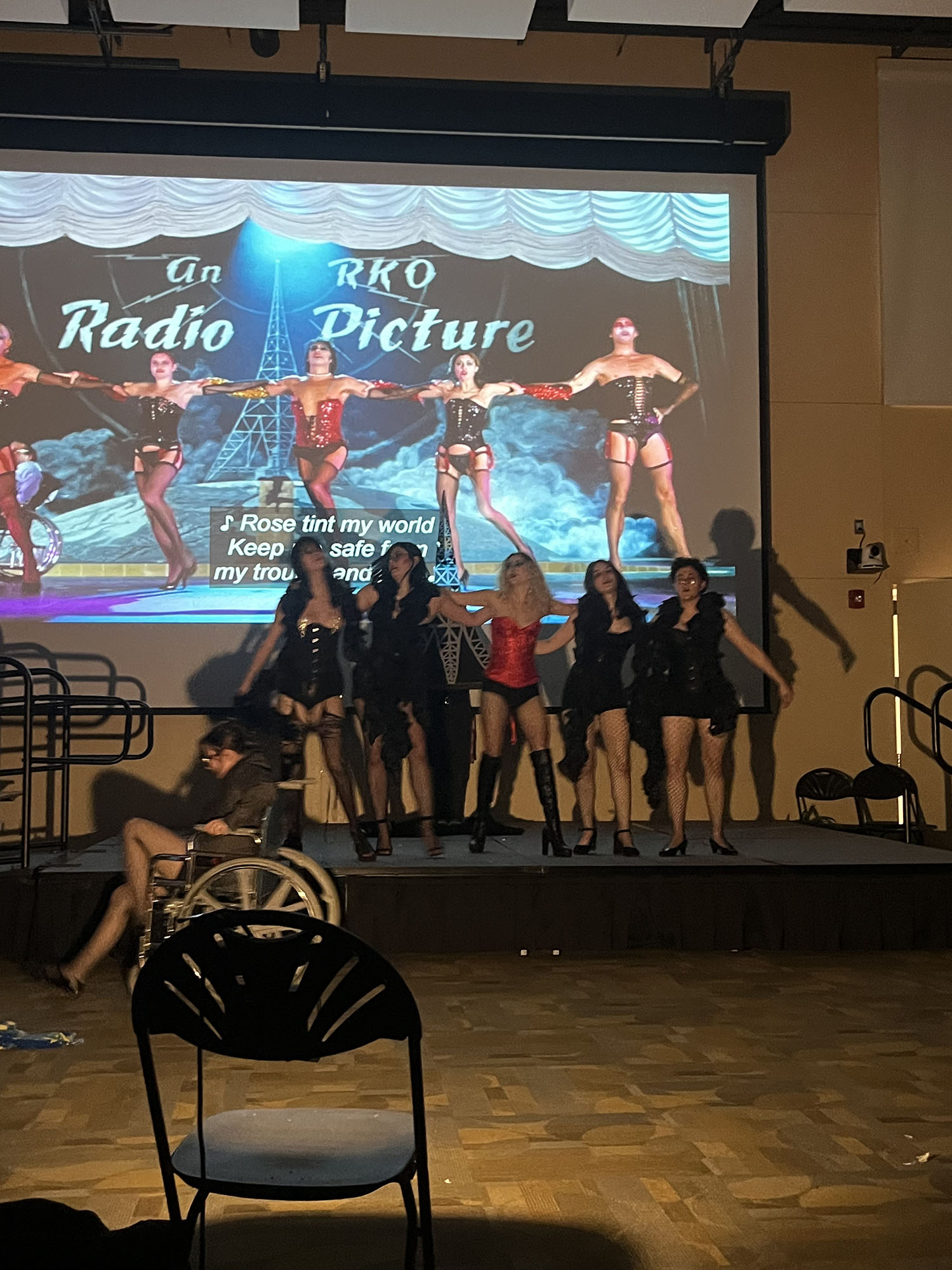Why is Rocky Horror a Cult Classic? – And an Iconic Arcadia Tradition
Every October, something magical and quite chaotic takes over the Great Room at Arcadia: The Rocky Horror Picture Show. Fishnets, glitter, drag, and time warps transpire as students and community members gather for a performance that’s equal parts wild, weird, and wonderful. I myself participated in my sophomore year and played the iconic maid Magenta. This year, I decided to sit back and enjoy an amazing show for my last year at Arcadia. But what makes Rocky Horror more than just a Halloween tradition? Why does it still captivate audiences nearly 50 years after its debut? To find out, I talked to a few members of this year’s cast and crew who know the show best.

“Rocky represents the resilience of the queer community,” says Isaak Courtright (he/him), a senior Chemistry major with a Physics minor who serves as this year’s Logistics Coordinator for the show. It’s his second year being involved; last year, he played a Transylvanian and helped with props. And now he’s seen firsthand how the show brings people together.
“I joined Rocky because it was always such a fun experience being in the crowd, and I wanted to help create that same memorable event for others,” Courtright explains. His favorite part is watching all the chaotic moving parts: acting, blocking, props, and costumes that finally click together. “It makes the show feel real and cohesive,” he says. The hardest part, though, has been finding consistent rehearsal space. “The Great Room is in high demand, and we couldn’t even use the stage until last Sunday,” Courtright added. He believes Rocky Horror still stands because it is “a long-running tradition of innumerable queer people,” himself included.

Annaley Frederick (she/him), a sophomore majoring in Actuarial Science with an Accounting minor, is participating for the second time as well. After playing Magenta last year, he’s taking on the iconic role of Frank-N-Furter this time around, and he couldn’t be more excited. “I’ve been going to my local shadowcast for years,” Frederick says. “It always looked so fun, and I knew I wanted to be part of it.” For her, the best part is diving into the costumes and makeup, “playing dress-up” as she puts it, transforming into one of the most flamboyant characters in cult film history. The most challenging part for him? “Learning the dances,” he admits, “but it’s all worth it once the music starts.” When asked why she thinks Rocky Horror endures the test of time, she didn’t hesitate, “It’s a staple of queer culture. It gives people an excuse to let their freak flag fly and have fun without any shame.”

That, ultimately, seems to be the secret to Rocky Horror’s lasting power: it’s a joyful, unapologetic celebration of difference where anyone can be themselves and feel safe. It’s camp, chaos, and community all rolled into one. Whether you’re a first-time audience member or a returning performer, it’s a space where people can be loud, proud, and gloriously weird together. Here at Arcadia, that spirit lives on every fall. The show isn’t just a performance; it’s a ritual, a tradition, one that keeps the doors open for anyone who wants to join in the fun. Rocky isn’t just about nostalgia or Halloween; it’s about belonging. As I look back at my memories with this show, I see even more just how much it impacted each person involved, and I can’t wait to see it one last time.

